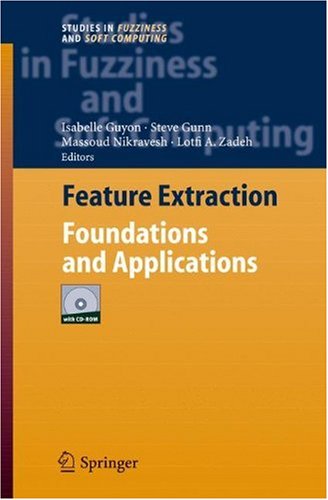

Most ebook files are in PDF format, so you can easily read them using various software such as Foxit Reader or directly on the Google Chrome browser.
Some ebook files are released by publishers in other formats such as .awz, .mobi, .epub, .fb2, etc. You may need to install specific software to read these formats on mobile/PC, such as Calibre.
Please read the tutorial at this link: https://ebookbell.com/faq
We offer FREE conversion to the popular formats you request; however, this may take some time. Therefore, right after payment, please email us, and we will try to provide the service as quickly as possible.
For some exceptional file formats or broken links (if any), please refrain from opening any disputes. Instead, email us first, and we will try to assist within a maximum of 6 hours.
EbookBell Team

0.0
0 reviews 
ISBN 10: 3540354883
ISBN 13: 9783540354888
Author: Isabelle Guyon, Steve Gunn, Masoud Nikravesh, Lofti A. Zadeh
Everyonelovesagoodcompetition. AsIwritethis,twobillionfansareeagerly anticipating the 2006 World Cup. Meanwhile, a fan base that is somewhat smaller (but presumably includes you, dear reader) is equally eager to read all about the results of the NIPS 2003 Feature Selection Challenge, contained herein. Fans of Radford Neal and Jianguo Zhang (or of Bayesian neural n- works and Dirichlet di?usion trees) are gloating “I told you so” and looking forproofthattheirwinwasnota?uke. Butthematterisbynomeanssettled, and fans of SVMs are shouting “wait ’til next year!” You know this book is a bit more edgy than your standard academic treatise as soon as you see the dedication: “To our friends and foes. ” Competition breeds improvement. Fifty years ago, the champion in 100m butter?yswimmingwas22percentslowerthantoday’schampion;thewomen’s marathon champion from just 30 years ago was 26 percent slower. Who knows how much better our machine learning algorithms would be today if Turing in 1950 had proposed an e?ective competition rather than his elusive Test? But what makes an e?ective competition? The ?eld of Speech Recognition hashadNIST-runcompetitionssince1988;errorrateshavebeenreducedbya factorofthreeormore,butthe?eldhasnotyethadtheimpactexpectedofit. Information Retrieval has had its TREC competition since 1992; progress has been steady and refugees from the competition have played important roles in the hundred-billion-dollar search industry. Robotics has had the DARPA Grand Challenge for only two years, but in that time we have seen the results go from complete failure to resounding success (although it may have helped that the second year’s course was somewhat easier than the ?rst’s).
An Introduction to Feature Extraction
Assessment Methods
Filter Methods
Combining a Filter Method with SVMs
Information Gain Correlation and Support Vector
Combining Information-Based Supervised
An Input Variable Importance Definition
Ensemble Learning
Ensembles of Regularized Least Squares Classifiers
Combining SVMs with Various Feature Selection
Variable Selection using Correlation and Single Variable
Tree-Based Ensembles with Dynamic Soft Feature
Sparse Flexible and Efficient Modeling
Margin Based Feature Selection and Infogain
Nonlinear Feature Selection with the Potential Support
Constructing Orthogonal Latent Features
Highly Predictive Features
Elementary Statistics
Confidence Intervals
ARCENE
GISETTE
DOROTHEA
MATLAB Code of the Lambda Method
High Dimensional Classification with Bayesian Neural
Index
feature extraction foundations and applications
feature extraction foundations and applications pdf
features of foundation makeup
what is feature selection and feature extraction
feature engineering vs feature extraction
feature extraction example
Tags: Isabelle Guyon, Steve Gunn, Masoud Nikravesh, Lofti A Zadeh, Feature, Extraction, Foundations, Applications